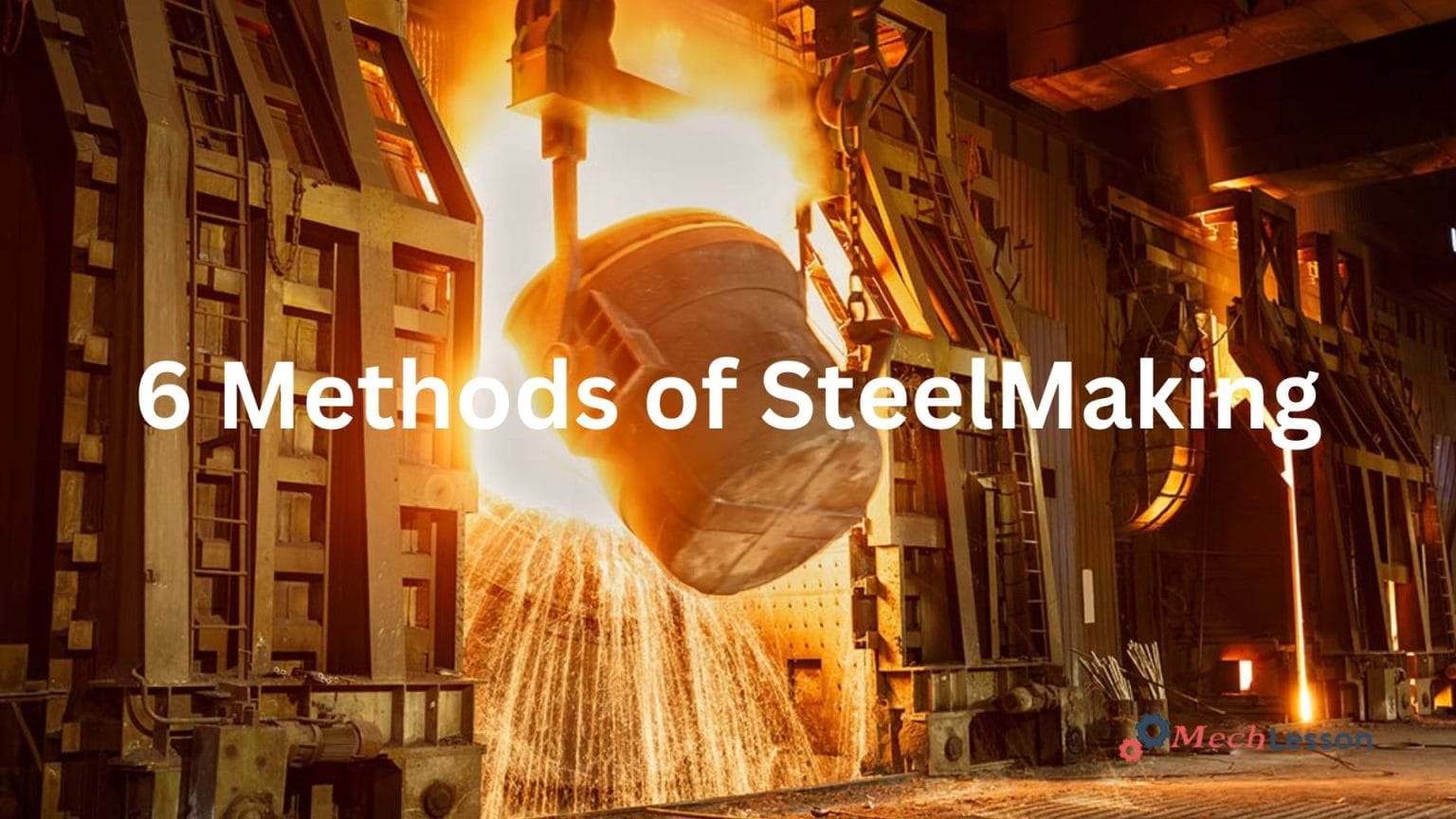Steelmaking is the manufacturing of steel from iron ore or scrap. Pig iron is well known as the basic block of all ferrous metals, produced from refined iron ore in a blast furnace with the addition of charcoal, limestone, and air.
Iron loses some of its impurities, such as silica, phosphorus, and sulfur, to become steel. These impurities are purposely removed because they cause serious weakness to the steel.
The various methods of steelmaking are the open-hearth furnace process, the Bessemer process, and the basic oxygen process.
If we further refine pig iron and add some carbon, we can obtain steel. When we do this, the metal’s crystalline structure undergoes a change, leading to the production of steel.
This is the most common steelmaking process ever known. In this reading, we’ll explore the various methods of steelmaking.
Let’s Get Started!
Related: What is Pig Iron? Its Applications, Properties & Composition
What are the Methods of Steelmaking?
We divide the various methods of steelmaking into primary, secondary, and tertiary categories. However, the common methods of steelmaking include electric arc, hlsarna process, basic oxygen furnace, hydrogen induction method, open-hearth furnace process, and bessemer method.
Electric Arc:
Electric arc furnace steelmaking involves melting iron from scrap or reduced iron using electric arcs. The furnace loads a batch of heat, sometimes with a “hot heel,” and gas burners are used to assist in melting.
Fluxes are added to protect the vessel’s lining and improve impurity removal. This process uses furnaces with a capacity of around 100 tonnes, producing steel every 40-50 minutes.
Halsarna Process:
The HIsarna process, a type of blast furnace, directly processes iron ore into liquid iron or hot metal, making it more energy-efficient and carbon-neutral than traditional steelmaking methods.
This process skips the manufacturing of pig iron pellets, resulting in a lower carbon footprint.
Related: What is Steel, its Properties and Raw Materials?
Basic Oxygen Furnace
A basic oxygen furnace is another process of steelmaking. Its manufacturing process is roughly 10 times faster than an open-hearth furnace.
This steelmaking process is achieved when high-purity oxygen blows through the molten pig iron, lowering carbon, silicon, manganese, and phosphorus levels. This sulfur and phosphorus level is reduced with the addition of a chemical cleaning agent called “fluxes.”
The addition of alloy to the steel helps in creating different properties. For example, in the production of stainless steel, 10–30% of chromium will be added to the steel. It helps the steel to strongly resist rust.
The production of chrome-moly steel involves the addition of chromium and molybdenum to the steel. It is known as very strong and light steel. Learn about the raw materials used in making iron and steel here!
Hydrogen Induction Method
In Sweden, a pilot plant tested the production of steel from direct-reduced iron, a renewable energy source. The process involves chemical reduction with hydrogen at 1,500°F (820°C), infused with carbon from coal in an electric arc furnace.
The cost of this process is estimated to be 20-30% higher than conventional methods. However, a 2018 Science study predicts that prices will break even at €68 per tonne of CO2, expected in the 2030s.
Related: What is Blast Furnaces? Its Diagram & How it Works
Open-hearth furnace process
In the process of steelmaking, iron ore, pig iron, and limestone are poured through the top of the open-hearth furnace, which is then heated to about 1,600°f (871°c). After the heating process, the ore and limestone form slag that is lighter than iron so it floats on the top surface.
Impurities, like oxidized carbon, float out of the iron and into the slag. This process results in the production of carbon steel.
Bessemer process of Steelmaking
The Bessemer process is the second method for producing steel from pig iron.
This steelmaking process also involves the oxidation of impurities in the pig iron, which is achieved by blowing air through the molten iron in a Bessemer converter; at this point, the heat of oxidation raises the temperature and keeps the iron molten.
Air plays an important role as it reacts with molten pig iron and makes the impurities from oxides and carbon monoxide burn off and other impurities from slag.

